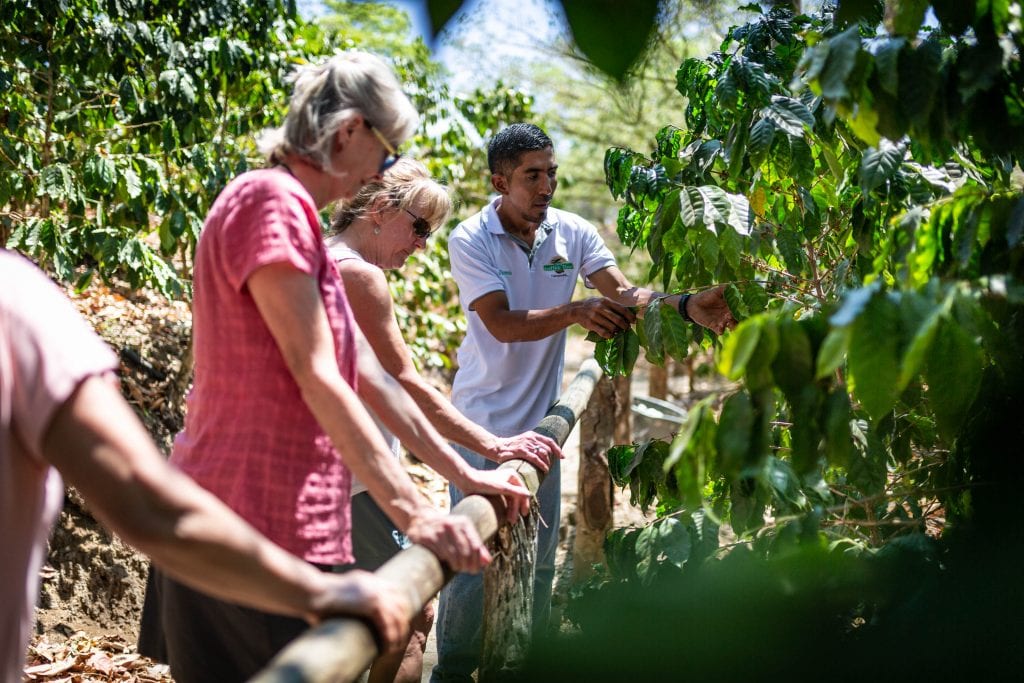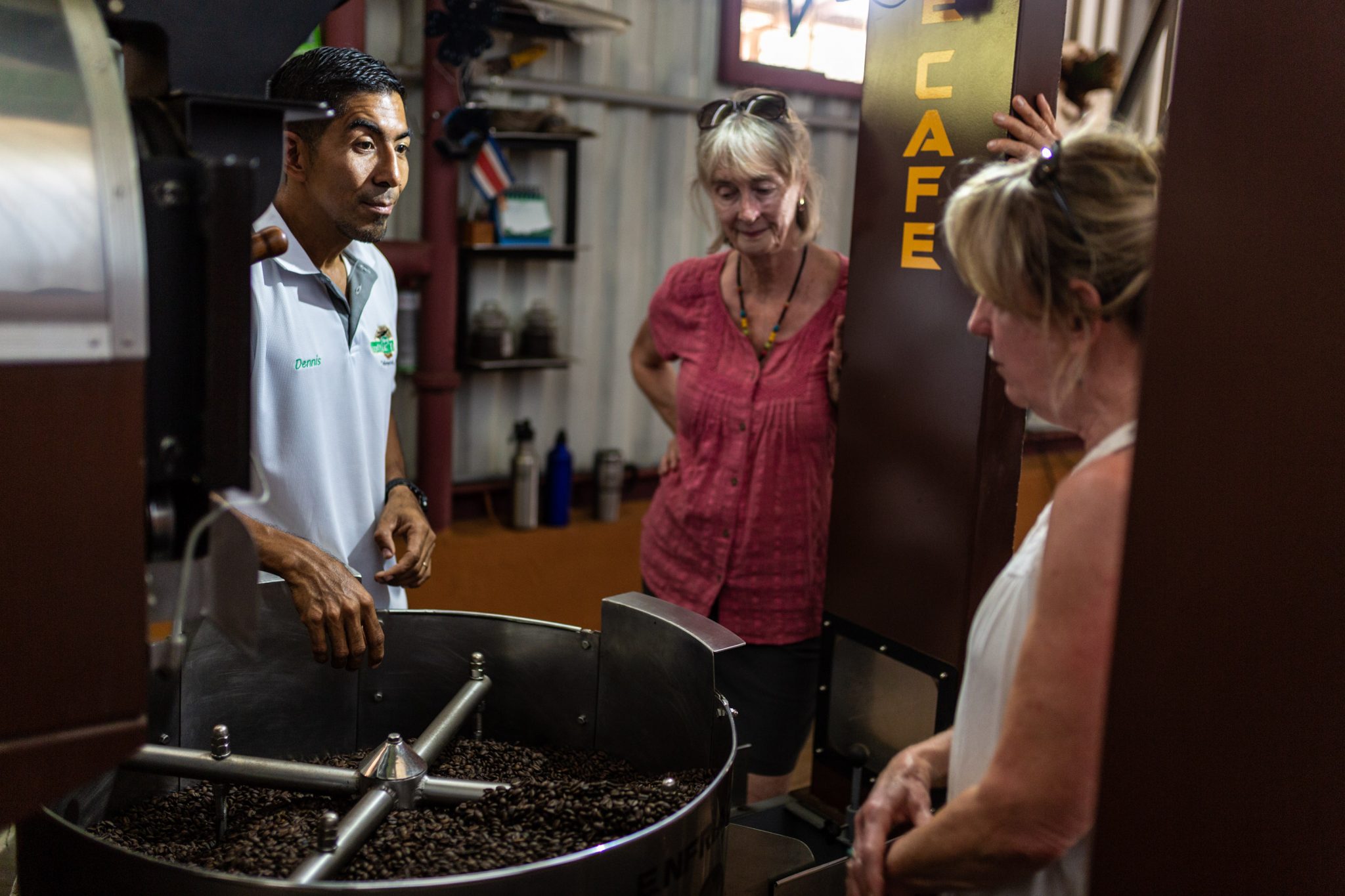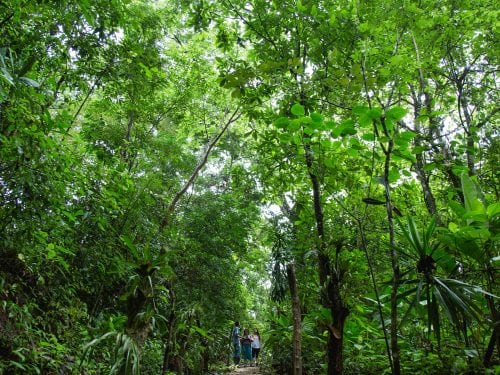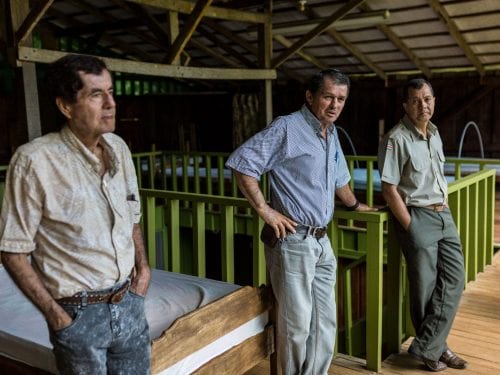
I drank coffee before I knew how to walk. My day doesn’t start without it and my bad attitude disappears when it’s present. But I dare to say that neither I nor my childhood friends, with whom I used to hide among the coffee trees, had any idea how this red bean went from the backyard to a steamy cup.
In order to clear up all the doubts I had for years, I came early to the hills at the entrance to Hojancha. Here, Diriá Coffee Tours offers four tours per day explaining the different processes of the coffee bean inside their mill.
Our guide is Dennis Pérez, a friendly native of Hojancha who has worked for this cooperative for 14 years. He has been leading the tours for five years. He welcomes me and three retired U.S. citizens, Lee, Joe and Juanita Wiley, who came from Playa Flamingo to join the tour. According to Dennis, most visitors are foreign and come from the coasts of Liberia and Santa Cruz.
Although we are a small group, it’s enough to start the tour. There is a two person minimum for tours and a 15 person maximum.
A soft breeze quells eases the 90 degree heat, which is supposed to reach nearly 100 as the morning passes by. We start the tour in front of several coffee trees, a few meters away from the ranch where they welcomed us. Dennis makes a line with the coffee beans from the smallest to the largest and explains that each of the phases, from germination to planting and harvesting.
Tours last between one to two hours, according to our guide. With a few questions at the beginning to break the ice, he explains the dynamic. If the tourists are reserved and serious, it makes things more explanatory and direct, but since this isn’t the case he decides to do it another way, an interactive class with trivia and scores.
“How much do you think a coffee picker gets paid for a basket of coffee,” Dennis asks as he begins a series of trivia and, at the same time, a battle among visitors to earn the most points.
The amounts that his new students guess range from $2 to $75. Dennis uses the moment to talk about paying a fair price to pickers since it’s hard work done by hand and can’t be industrialized because of the hilly conditions that coffee is planted in.
While the Costa Rican coffee institute sets the minimum wage at ¢950 ($1.60), Coopepilangosta pays around ¢1.300 ($2.20).
Our next destination is the coffee silo, a large, metal building several stories high where they wash the beans and remove the skin. Ahead you can see the green coffee plants that haven’t matured yet and are still in the process of producing the drink that has us here.
The Other Harvest
These buildings and the farm we are on belong to Coopepilangosta, a cooperative founded by coffee producers in 1962 in search of better market conditions for their coffee. In 2005, they began to seek ways to attract tourists to the area and generate revenues during the eight months between harvests.
That’s how Diriá Coffee Tour mixed the two most important Costa Rican products: coffee and tourism.
We leave the silo and Dennis pauses and gives beans to the students to try and shows us some native trees.
A few beans later and we reach the drying area. Here we learn about the different methods of drying coffee and we also see how the beans are ground. We are almost at the end of the tour and it doesn’t feel like we’ve been here for an hour, walking around and learning. “It’s fun and time goes by fast,” Dennis says.

Dennis Pérez explains the germination phase and the planting and harvesting process to U.S. tourists Juanita, Joe and Lee Wiley.Photo: César Arroyo
The “final exam,” as the professor calls it, is a tasting of two different types of coffee to identify which is higher quality. One cup is made with a small bean with a strong flavor called peaberry and the other is made with a regular grain.
Next to the tasting room is a gift shop full of Matambú crafts and the Diriá coffee they produce here. My three friends leave carrying bags full of indigenous masks and premium coffee.
Things to Know
Contact: (+506) 2659-9130
Price: $21 foreigners, $10 nationals
Tour hours: Monday thru Friday: 9:30 a.m, 11:30 a.m, 1:30 p.m, and 3:00 p.m.
Weekends: By reservation
Let’s Visit Hojancha!
If you already reserved the day to go visit Hojancha, these are other options for visiting without having to travel far.
Matambú tours: Take part in rural tourism with local guides at the Matambú Indian Reserve. Tel.: 8638-8890.
Monte Alto Reserve: Dive deep into the Hojancha forest. Tel.: 2659 9347
Salto del Calvo Waterfall: Take a dip in Central America’s highest waterfall. Tel.: 8492-0894







Comments